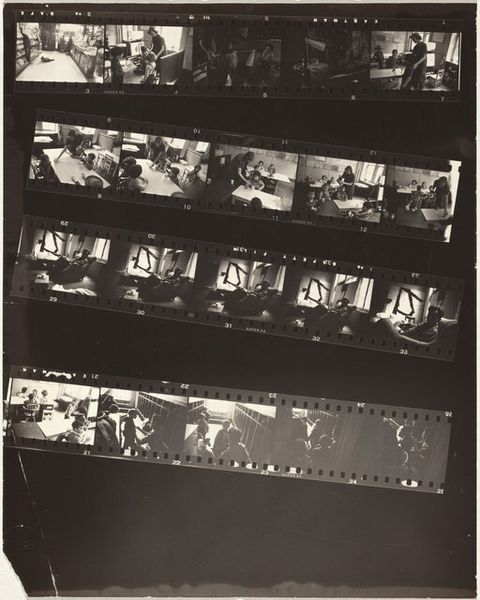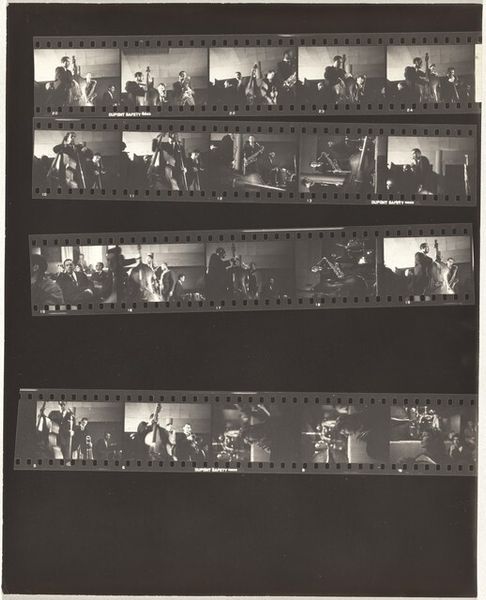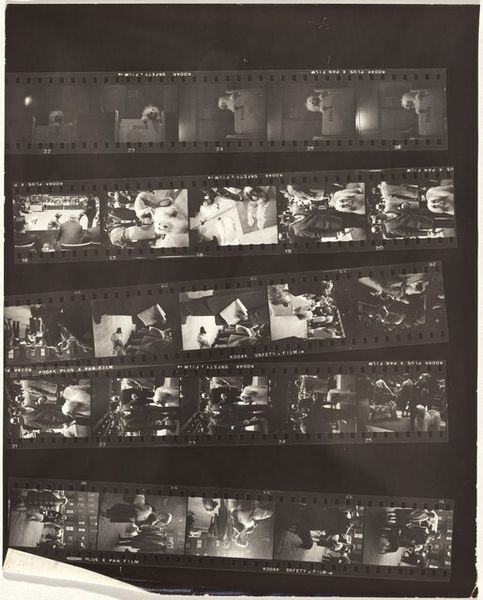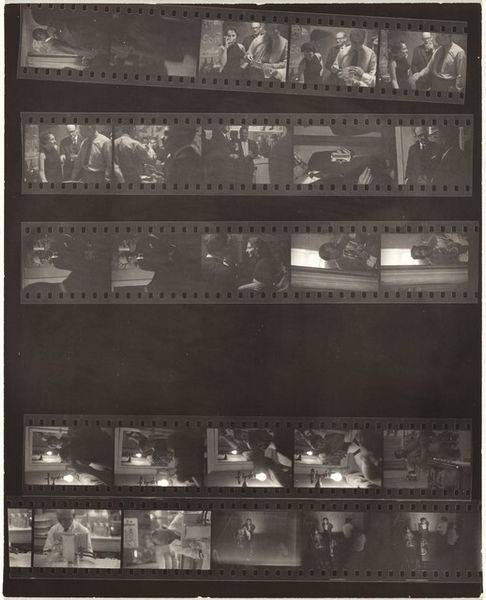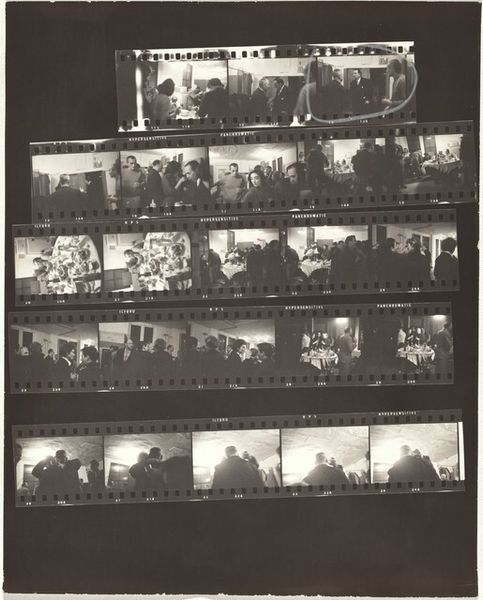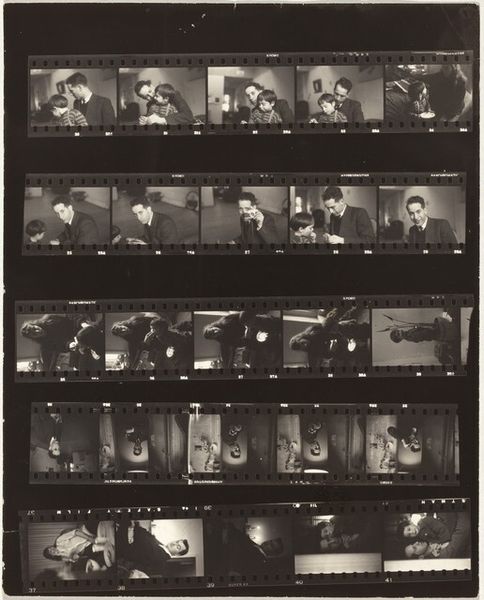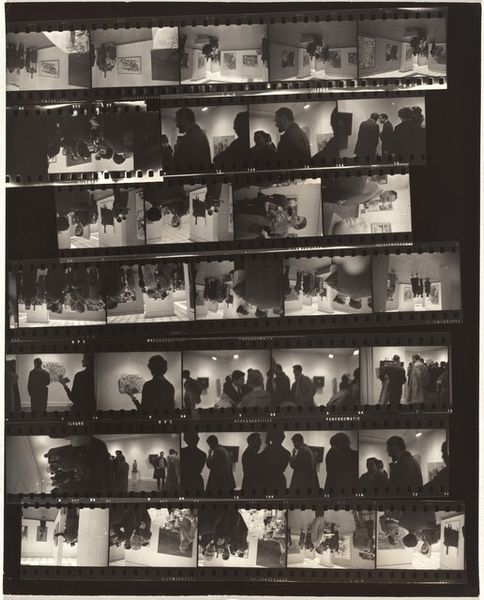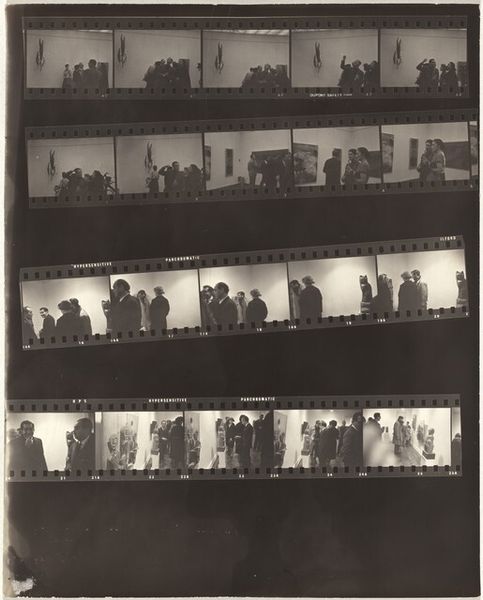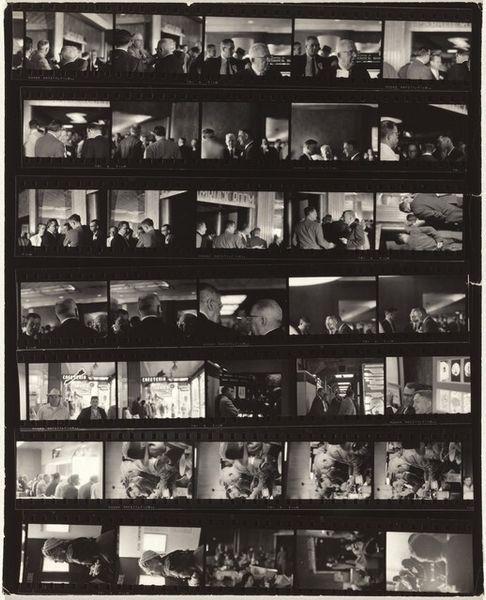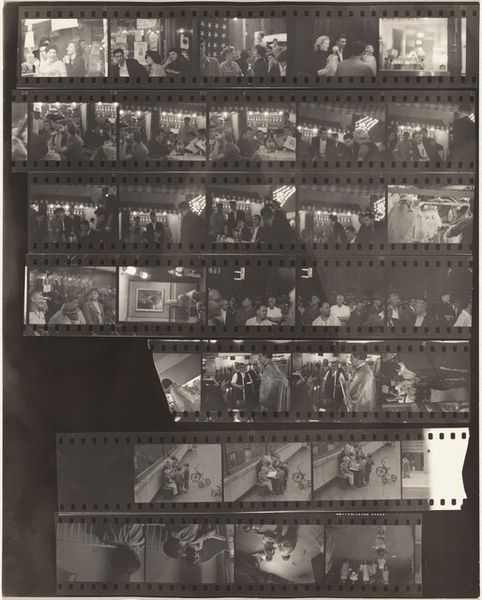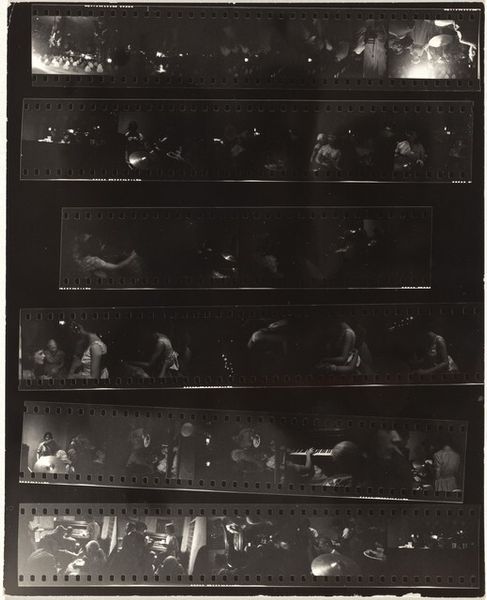
Dimensions: overall: 25.3 x 20.5 cm (9 15/16 x 8 1/16 in.)
Copyright: National Gallery of Art: CC0 1.0
Editor: This is Robert Frank’s "Guggenheim 448--Los Angeles" from 1955-1956, a gelatin-silver print. It's a sheet of film strips. The photos within seem to show people at performances, or in clubs. They look very glamorous, almost like publicity shots. What catches your eye in this work? Curator: For me, it’s the act of presentation itself that's interesting. Frank's choice to exhibit the negatives rather than individual, carefully selected prints suggests a deliberate act of demystification. He shows us the raw material, the outtakes, the almost-shots, refusing the perfected image often promoted in the context of Hollywood glamour. How do you think this presentation style might have been received at the time? Editor: I imagine it would have been seen as very different! I mean, people were used to polished, idealized versions of reality, especially related to entertainment. Showing the behind-the-scenes stuff must have broken with expectations. Curator: Exactly. Think about the social and political climate of the 1950s. Conformity was highly valued, and Frank, with his European outsider perspective, challenged that with this raw, almost documentary style. These film strips become a kind of social commentary, a peek behind the carefully constructed facade of American entertainment. It's a critique of how images are produced, circulated, and consumed. Editor: That makes sense. He’s not just taking pictures; he’s showing the whole process and questioning the end result. It highlights that there's so much that goes unseen and unconsidered when we consume media. Curator: Precisely. It invites us to question the role of the photographer, the subject, and the viewer in constructing meaning, and highlights how Frank, as an artist, helped transform the notion of photographic truth within public discourse. Editor: This really helps me appreciate how Frank used the format itself to make a statement. I’ll definitely be thinking differently about photographs and the power of their presentation. Curator: Likewise! The work underscores that the very choices around how images are shown—or *not* shown—are profoundly meaningful.
Comments
No comments
Be the first to comment and join the conversation on the ultimate creative platform.
